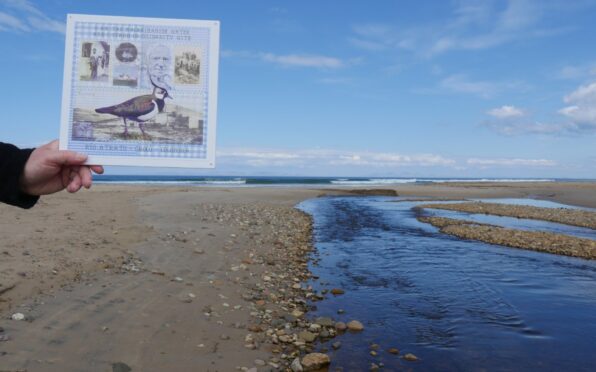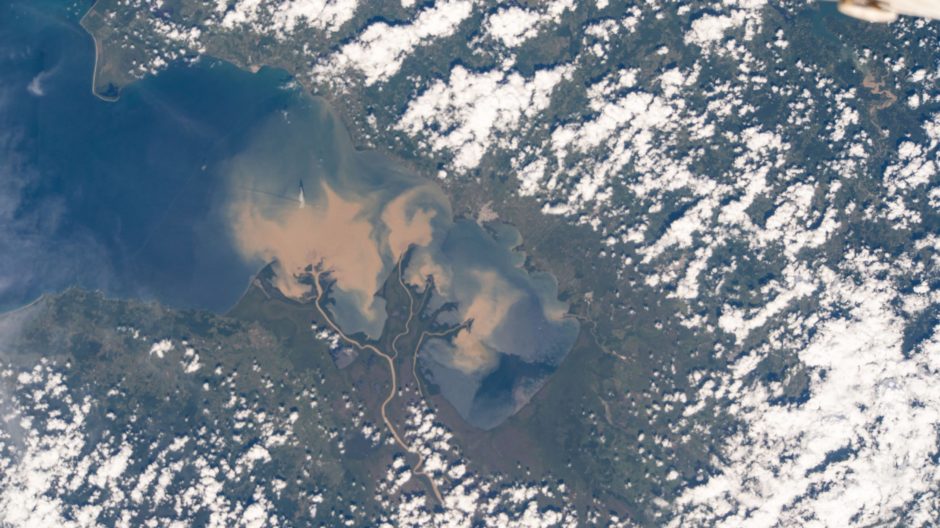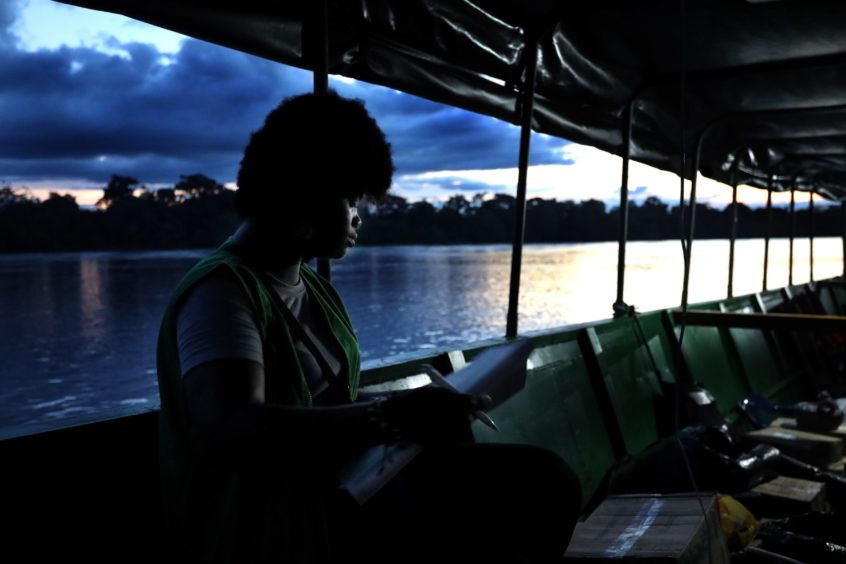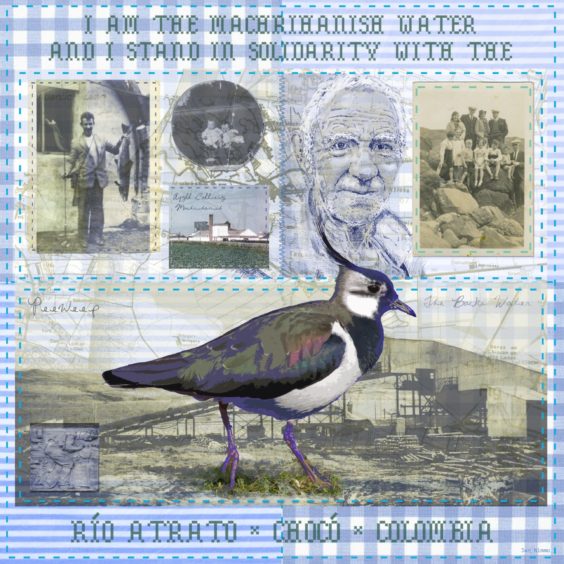
They say no one steps in the same river twice but an artist is urging people to paint their home-town waterways to show common cause with the riverside communities of Colombia facing environmental devastation.
Jan Nimmo is part of a global art campaign in support of indigenous Colombians facing social and environmental devastation due to conflict and illegal gold mining.
The Ríos Solidarios (Rivers in Solidarity) project by Nimmo – a Glasgow-based artist and filmmaker – is a collaboration with Glasgow University that aims to raise awareness of grave issues affecting people living along the 400-mile River Atrato in north west Colombia.
Communities at risk
The Atrato runs the length of the Chocó region but illegal gold mining, linked to the nation’s long-running internal conflict, has wreaked havoc in one of the poorest territories in South America.
Despite Colombia’s 2016 peace accords, river communities suffer at the hands of armed groups that include paramilitaries and organised crime. Large-scale, illegal gold mining fuels the conflict, as different groups fight for control of the lucrative trade.
The river communities face constant violence and their social leaders have been systematically targeted by armed groups. The worsening situation has led to forced displacement and the loss of traditional, sustainable livelihoods due to pollution, destruction of river channels and deforestation.
Nimmo was due to travel to Chocó to meet the river people but airports in Colombia were closed the day she was due to fly because of the global pandemic. This meant a rethink of the project with Glasgow University and partners in Colombia.
The initial idea was to develop river stories through Nimmo’s art to be exhibited in Scotland. The hope now is people around the world will produce art based on their own local rivers, as a show of solidarity to the Colombians.
Nimmo has produced artworks based on the River Clyde, River Ayr and Machrihanish Water.
She said: “It is key for me to connect people and communities through my work in an accessible way and I use a variety of methods and media from filmmaking, drawn or printed portraiture to digital collage.”
“Ríos will be a space for anyone, not just professional artists, to be involved in creating artworks in solidarity with the Atrato and its people. The artworks will be added to an online gallery and shared with the communities in Chocó and on social media. I have created a few digital collages to get the ball rolling.”
River Guardians
Part of Nimmo’s remit is to make portraits of so-called River Guardians – the human face of a Colombian Constitutional Court ruling in 2017 that granted rights to the River Atrato.
Academics at Glasgow University have been working with people along the Atrato for some years to defend their human rights, and they helped them win that landmark legal case.
There are 14 guardians but they fear for their lives due to the targeting of human rights activists by militias. More than 400 human rights defenders have been murdered since 2016. The Sunday Post interviewed two of the River Guardians when they visited Scotland in 2018.
Human rights have been a focus of Nimmo’s work in the past. In 2015 she produced portraits of 43 students – now feared dead – who disappeared in Mexico in 2014. This highlighted forced disappearances in Mexico – more than 25,000 people have vanished since 2007 – and sparked a year of protest and the onset of an international movement.
Nimmo added: “There are several strands to my artwork: human and environmental rights, commemoration and visual storytelling, which I have used to illustrate lives of banana workers in Latin America and Central Africa, the ‘disappeared’ of Mexico, cork harvesters from the Sierra de Huelva in south-west Spain, and the industrial heritage of my native Kintyre.”
Mo Hume, professor of Latin American politics at Glasgow University said: “We are excited to be collaborating with Jan on this solidarity art project. The Atrato is one of the first rivers in the world to be recognised as a river with rights, which challenges us to think carefully about our relationship with nature and how to ensure we not only recognise but respect and protect its rights.
“We hope the fact this project has its roots in Glasgow in the year of Cop26 will draw attention to the interconnectedness of people, nature and ecosystems across the globe in the face of the climate crisis.”

Enjoy the convenience of having The Sunday Post delivered as a digital ePaper straight to your smartphone, tablet or computer.
Subscribe for only £5.49 a month and enjoy all the benefits of the printed paper as a digital replica.
Subscribe © NASA/ZUMA Wire/Shutterstock
© NASA/ZUMA Wire/Shutterstock © MARTIN GARCIA/EPA-EFE/Shutterstock
© MARTIN GARCIA/EPA-EFE/Shutterstock © SYSTEM
© SYSTEM